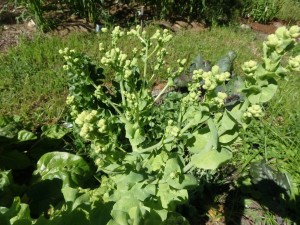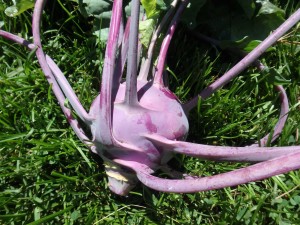Going to Seed … or the Freezer
My vegetable garden is producing more food each day than I can eat, but I’m trying to keep up with it by freezing, dehydrating and storing the bounty. And of course, I drive around with zucchini in my car, always looking for a willing recipient of some summer squash. But I am also deliberately letting some things go to seed.
We sometimes describe people who are going downhill and not paying attention to their appearances as “going to seed.” That’s an odd phrase, and has negative connotations. But I like letting lettuces and some other greens go to seed. Why? They will come back and produce early greens in the garden.
Once lettuce starts to elongate and get tall, also known as bolting, it starts to get bitter. If you pick it, you will notice white sap in the stem, usually a sign of bitter alkaloids. So you can pull it and toss it on the compost pile, or allow it to produce seed. Or eat it, if you like the flavor.
Most lettuces are not hybrids, so you can save their seed and get good free seeds. But read the seed package or catalog – or go on line and ask Dr. Google – to verify that the named variety you are growing is not a hybrid before collecting seed, or allowing it to self-sow. Anything listed as “heirloom” not a hybrid. (Hybrids are crosses of two varieties and do not usually breed true).
Lettuce normally self-pollinates as the stigma (which captures the male pollen) pushes up through the florets. If you want to cross breed lettuces, I have read that you can grow different varieties side-by-side and then tie two plants together when they have bolted and are about to produce flowers, thus facilitating cross breeding. I’ve never tried this, however.
If I want lettuce to produce seeds, I remove any newspapers and hay – the mulch I use – from around it. This allows seeds to fall freely into the soil where it will, generally, not germinate until next spring. Alternatively, one can take plants with dry seeds and shake the seeds out over a new, clean bed for lettuce next year.
I like to let a few other greens go to seed, too. Magenta spreen, amaranth and orach are other edible greens that I grow – but rarely have to plant. All are just one step from being weeds, and can be eaten raw or cooked. Orach has gorgeous purple leaves, and the spreen, particularly when young, has green leaves with pink edges. Amaranth has edible leaves, nice blossoms, and seeds that are eaten as grain in South America. Right now I have one spike of magenta spreen that stands 104 inches tall!
Tomatoes are starting to ripen for me: first the cherries, and now smaller plum tomatoes. In a few weeks those big, juicy heirloom tomatoes like Brandywine will be along – sending me, temporarily at least, to heaven.
I had a garden party recently and my guests were somewhat surprised to see that I have 30-some tomato plants. Although I share some of the fruit, I eat it fresh (3 times a day) and freeze the rest. I freeze whole tomatoes in zipper bags and cook with them all year.
To make these “red rocks”, all I do is wipe them clean and fit them into freezer-grade plastic bags. I place them on a cookie sheet in the freezer. When I want to make a soup or stew that calls for tomatoes, I just run a few tomatoes under hot water in the sink until I can easily rub off the skins. Then I wait a few minutes for them to soften, and cut into pieces for the soup pot.
Imperfect tomatoes I often make into tomato paste and freeze in ice cube trays until frozen, and then in zipper bags. I remove any imperfect spots and then core the tomatoes in the sink, squeeze out the excess seeds and juice, and puree in the Cuisinart. Then I boil down the puree for a few hours in a heavy enamel-clad cast iron pot. When I can literally stand up a spoon in the mix, it’s done. I leave it out all night uncovered to cool and to evaporate a little more moisture before spooning it into those ice cube trays.
Kohlrabi has done very well for me this year. I started seeds in the house in the spring, and transplanted them into the gardening early summer. This worked better than planting seeds in the ground, as there was no thinning to be done and the plants are perfectly placed.
I peel raw kohlrabi and cut it up in salads, or cook it in stir-fry or stews. The purple variety I’m eating now is so pretty I’m going to use it as a centerpiece on the table tonight. Oh my, the pleasure I get from my garden!
Read Henry’s blog twice weekly at https://dailyuv.com/




